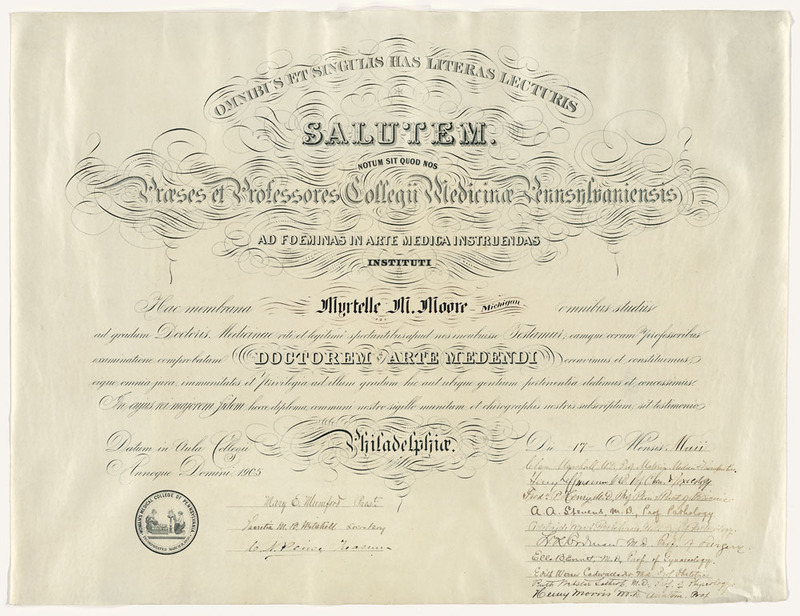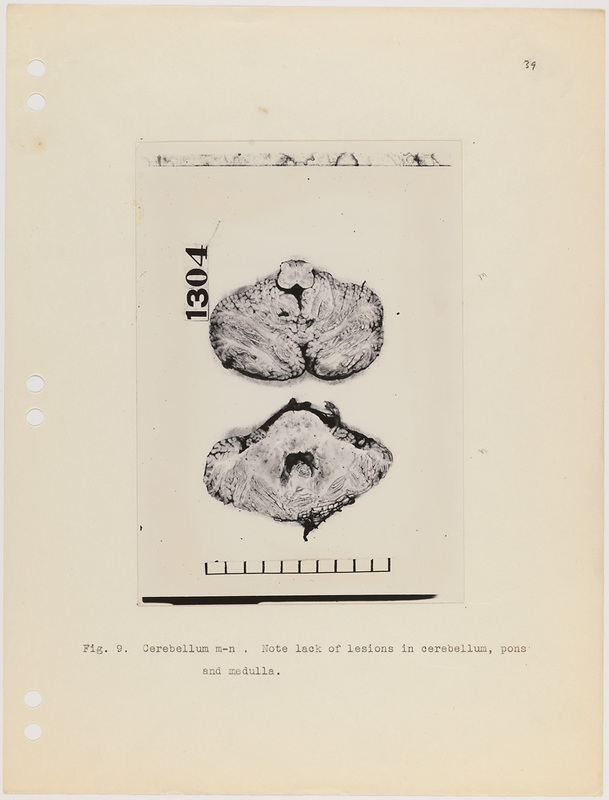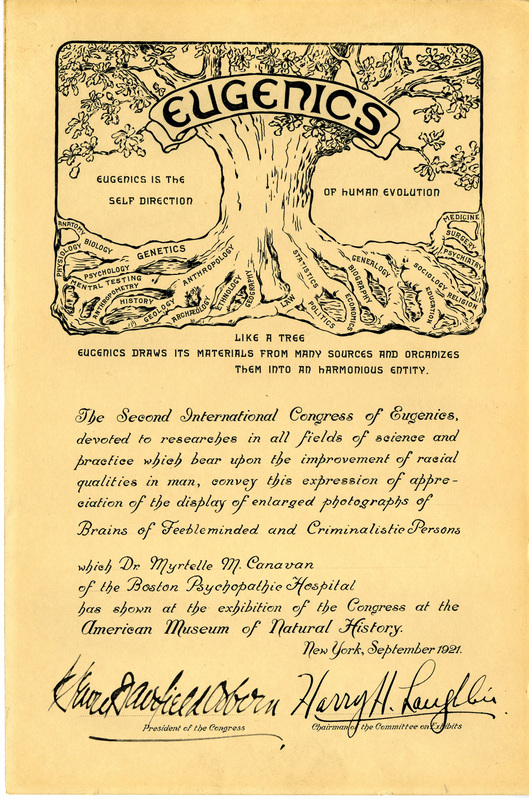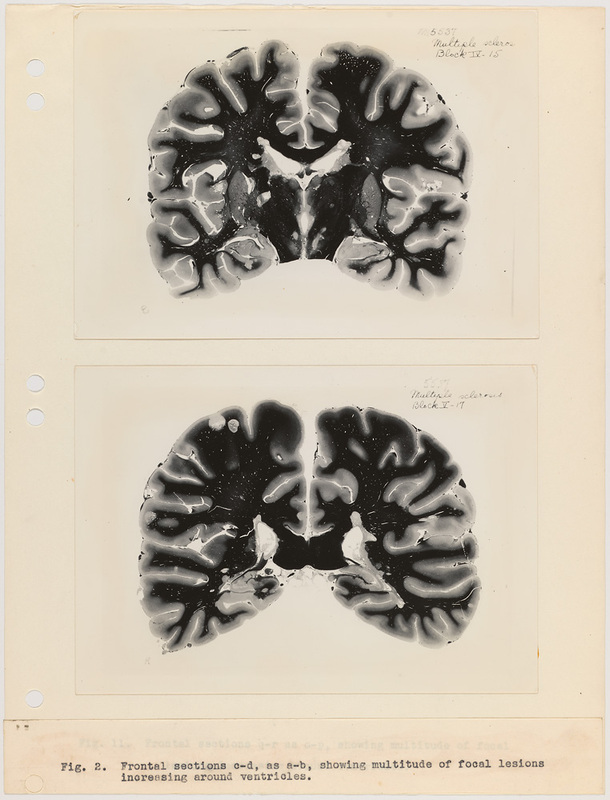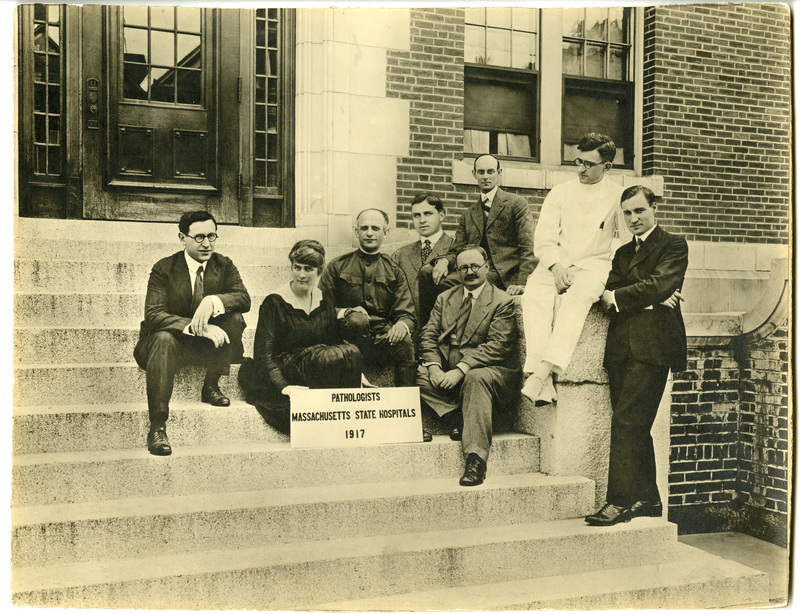Myrtelle M. Canavan
Around the mid to late nineteenth century, dissatisfied with the handful of medical schools that accepted women, pioneering women helped found a number of women’s medical colleges in the U.S., they included: New England Female Medical College (1848), Woman’s Medical College of Pennsylvania (1850), New York Woman’s Medical College (1863), Woman’s Medical College of the New York Infirmary for Women and Children (1868), Woman’s Medical College of Chicago (1870), and Woman’s Medical College of Baltimore (1882). Myrtelle M. Canavan was a graduate of the Women's Medical College of Pennsylvannia.
The top photograph is a slice through the medulla and cerebellum; the bottom photograph is through the midbrain and cerebellum. As Dr. Canavan’s description states, neither photograph shows any abnormalities.
Dr. Canavan is credited with being one of the earliest American female neuropathologists. She was the first woman to be named Curator of the Harvard Medical School's Warren Anatomical Museum. While serving as Curator, Dr. Canavan deaccessioned and discarded specimens that were either spoiled or in disrepair. The weeding of this collection, in conjunction with her meticulous record keeping, brought intellectual control to a collection that had been poorly organized for years. While serving as Curator, Dr. Canavan held several other posts including: Associate Professor of Neuropathology at the Boston University School of Medicine, Assistant Pathologist at the Massachusetts Department of Mental Diseases, and Instructor of Neuropathology at the University of Vermont.
From September 22-October 22, 1921, the American Museum of Natural History, which hosted the Second International Congress of Eugenics, temporarily converted its Forestry Hall into an Eugenics Hall. This poster is an example of one of the enlarged photographs of “Brains of Feebleminded and Criminalist Persons” that Dr. Canavan put on display at the Museum. The subject of the poster was charged with breaking and entering. In her notes, Dr. Canavan recorded that the subject had normal parents and twelve siblings, two of which were abnormal.
The Second International Congress of Eugenics was hosted by the American Museum of Natural History in New York City from September 21-28, 1921. It was attended by over 300 people from around the world, including future president Herbert Hoover. As seen on this certificate, the logo the Congress used was a tree whose root system was a variety of fields.
Both photographs show numerous lesions, indicative of the lesions found in a person who has multiple sclerosis.
Dr. Canavan was particularly interested in understanding defects of the brain. In her research, she would examine cases of microscopic hemorrhage and multiple sclerosis using images such as the one displayed. In 1931, her research led to the identification of Canavan’s disease, a rare, degenerative disorder of the central nervous system characterized by spongy changes in the brain.

